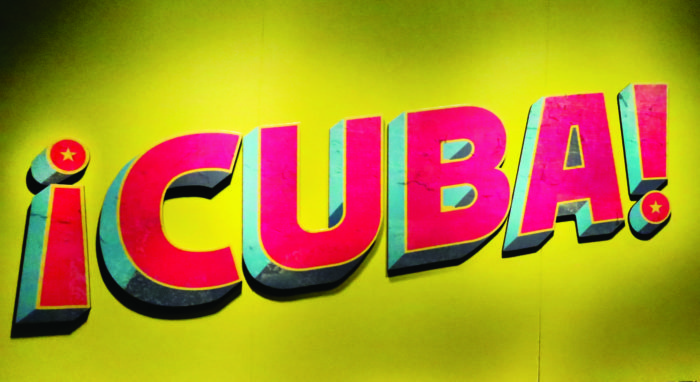
If you have been curious about exploring Cuba but unsure where to start, take a direct flight to the Denver Museum of Nature and Science (DMNS). The new exhibit–¡CUBA!–opened on October 26 and is as close as you can get to Cuba without booking air travel. Organized by the American Museum of Natural History, the exhibit places special emphasis on Cuba’s natural resources, but also touches on Cuban history and culture. The lively and interactive exhibit will surely have you looking for the next opportunity to visit this fascinating Caribbean nation. https://vimeo.com/297357075
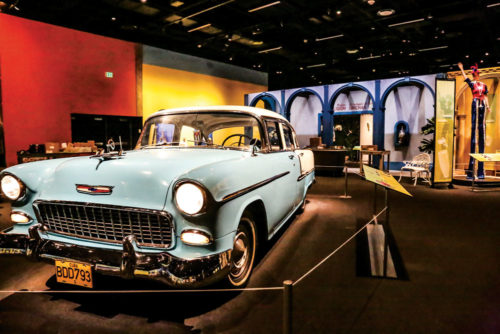
Cuban ingenuity and tourism have kept vehicles like this 1957 BelAir on the road despite the U.S. trade embargo that makes getting parts extremely challenging. Soviet-era Lada and Moskvitch cars also endure.
Though we tend to think of Cuba as the largest island in the Caribbean, in reality our neighbor—only 94 miles from Florida—is actually comprised of over 4,000 islands. The nation is the site of tremendous biodiversity, including some animal and plant species not found anywhere else. Geopolitical shifts in the wake of the 1959 Cuban Revolution inadvertently served to protect some of these natural resources, as tourism and other activities were restricted by the socialist regime. Today, the hemisphere’s richest coral reefs, wetlands, and cave systems are within Cuba, and make for unique travel experiences.
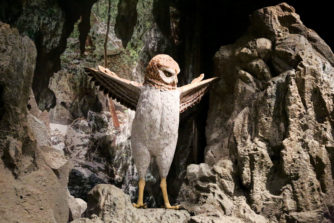
Cuba’s late Pleistocene-era owl, Ornimegalonyx, was the largest that ever lived.
DMNS Early Childhood Education Specialist Cybil Holmes says DMNS wanted to go beyond the exhibit curated by the American Museum of Natural History and add some Colorado touches. To that end, DMNS interviewed several Denver residents of Cuban descent. These Denverites shared memories as well as objects that speak to them of their country of origin, lending an intimate and local perspective on the Cuban diaspora. DMNS also met with representatives from Denver’s Cuban population to better stage the exhibit, which includes Cuban percussion instruments and a small stage. The experience is complemented by Cuban fare in the T-Rex Café.
Though uncertainty about U.S. policy has left many U.S. travelers reticent to go to Cuba, prior to the 1959 Revolution that brought Fidel Castro to power, the two peoples enjoyed an exceptionally close relationship. Wealthy Cubans owned homes in Florida and sent their sons to be educated in the U.S. Cuban patriot José Martí lived in New York City and raised money and sympathy for the island’s independence movement, and baseball became the national pastime in both countries. The DMNS exhibit shares some of this love for baseball among its many interactive and kid-friendly displays.
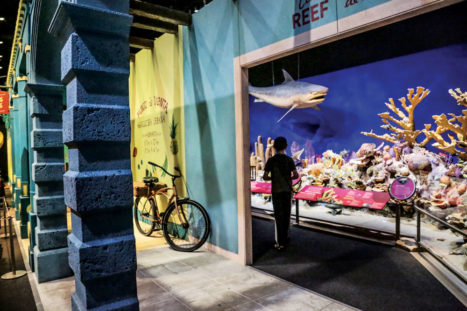
Cuba’s biodiversity and near-pristine coral reefs make for exceptional snorkeling and scuba diving in places like the Gardens of the Queen Marine Reserve.
The Cuban Revolution profoundly transformed Cuban society, greatly limiting civil discourse and economic freedoms while also improving healthcare and education, especially in rural areas. Displeasure with the new regime’s nationalization of U.S.-owned properties in Cuba led to President John F. Kennedy’s 1962 ban of all Cuban imports to the U.S. This expansion of the 1960 embargo took effect just a few hours after JFK had placed his order for 1000 Cuban Petit Upmann cigars with the White House Press Secretary.
The ongoing U.S. trade embargo led to some of the features we associate with Cuba today, including local ingenuity maintaining 1950s-era U.S. cars. You can see a 1957 Chevrolet BelAir and a bicitaxi—a Havana version of the pedicab—at the DMNS along with other elements of popular culture.
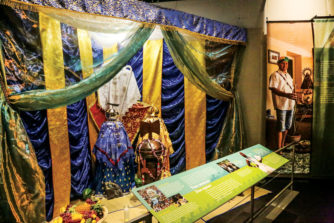
Though much of Cuba is Catholic, many people practice an Afro-Cuban religion known as Santeria. In Santeria, orishas or deities offer guidance to the living.
¡CUBA! runs through Jan. 20, 2019 and is included with your regular DMNS admission. Speakers, performances, and special events to satisfy any armchair traveler, including an adults-only “Night in Havana” on Nov. 9, can be found at http://www.dmns.org/cuba/.
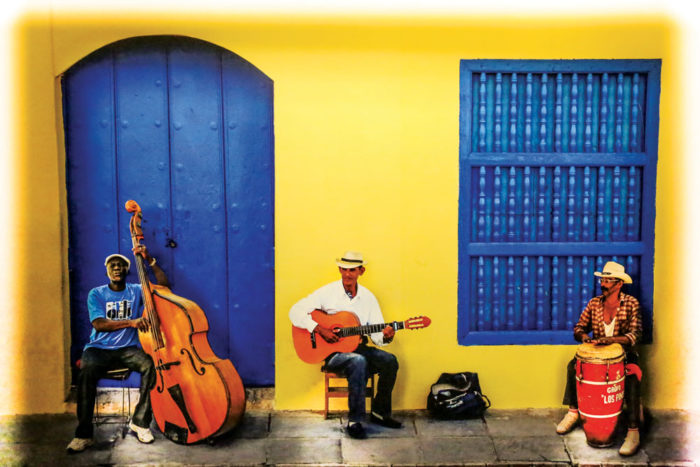
Numerous musical styles—including rhumba and son—originate in Cuba, and ensembles often perform in Havana’s many plazas.



0 Comments